Scientific program > Invited speakers
Confirmed keynotes lecturers for the Nano in Bio 2022 conference:
 |
Prof. Nicholas Kotov
University of Michigan, United States
He is known for his pioneering contributions to biomimetic nanostructures. In this large interdisciplinary research fields, he has been working on the topics of layered biomimetic nanocomposites, self-assembly of nanoparticles, and chiral nanostructures. He has founded several start-up companies producing nanomaterials for transparent armor, energy storage, and biomedical applications. Nico Technologies Inc. utilized rolling contact LbL manufacturing (also known as Turbo LbL) to manufacture high strength transparent composites from clay, graphene, and carbon nanotubes. He found a venture-backed company 3B Biomatrix that implemented bone-mimicking LbL coatings for drug discovery in three-dimensional cell cultures.
Topic: Latest advances in materials application & life sciences
|
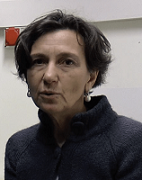 |
Dr. Loredana Casalis
Synchrotron of Trieste, Italia
Doing a lot of DNA-based nanotechnology and moving progressively towards cancer research. Her expertise is in surface bio-functionalization and in the exploitation of scanning probe microscopies to investigate the biophysics of protein interactions, enzymatic reactions on surfaces, and to develop nanoscale devices for quantitative diagnostics and disease monitoring. Her group has optimized procedures for the nanografting of unstructured proteins relevant to neurodegenerative diseases, and to study fibrillation in-situ, on bare surfaces and in model membrane layers. She has also established experience with synchrotron radiation based structural and spectroscopic techniques.
Topic: Scanning probe microscopy & force spectroscopy
|
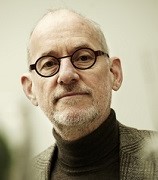 |
Prof. Patrick Couvreur
Institut Galien - Université Paris-Saclay, France
He is a Professor of Pharmacy and a Senior Member of the “Institut Universitaire de France” since 2009. He is also the recipient of an “ERC Advanced Grant” (2010-2015) and of an “ERC Proof of Concept” (2015-2016). His research are focused in the field of drug delivery, nanomedicine and drug targeting. He also aims at developing new nanomedicines for the treatment of severe diseases. This research is at the interface between Physico-Chemistry of Colloids, Polymer Chemistry, Material Science, Cellular and Molecular Biology and Experimental Pharmacologiy.
Topic: Latest advances in materials application & life sciences
|
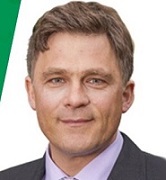 |
Prof Hermann Schillers
University of Münster, Germany
He is associate Professor at University of Munster and his research are focused on the structure, function and dynamics of CFTR. He created an “Atomic Force”-Microscopy Lab to investigate biological membranes and the mechanical properties of living cells. The other focus of its research interest is on the diagnosis of cystic fibrosis. He was able to establish the trans epithelial nasal potential difference measurements (NPD) for diagnostics and teaching. Furthermore, he developed a blood-based method for the diagnosis of cystic fibrosis which is actually tested in a multicenter clinical trial.
Topic: Optical microscopies & spectroscopies
|
 |
Dr. Teuta Pilizota
University of Edinburgh, United Kingdom
His researches are focused on developing novel tools for quantitative observations of changes in physiological parameters in single bacterial cells. By integrating state-of-the-art fluorescence imaging techniques, microfluidic devices, optical trapping techniques and microbiology methodologies, we are striving to understand the direct influence different stress response networks have on each other and on the survival of bacterial cells. Optical tweezers and traps developers that she uses to look at the interplay between electrochemical and mechanical energy in organisms.
Topic: Simulations and machine learning
|
 |
Prof Jamie Hobbs
Sheffield University, United Kingdom
Jamie Hobbs is a Professor of Experimental Physics at the University of Sheffield, UK. Following a first degree in Physics and a PhD in Polymer Physics at the University of Bristol, UK, his research shifted to the development and application of atomic force microscopy for studying soft matter systems. On moving to Sheffield to take up a lectureship in 2004, he started to collaborate with biologists. Now his group uses and develops AFM for understanding living systems. A main focus is on understanding the bacterial cell wall and how antibiotic challenge leads to cell death and the development of drug resistance, funded by The Wellcome Trust and UKRI. He also leads research projects using AFM to probe the mechanobiology of the bone metastatic niche in breast cancer, and plant morphogenesis. This work is underpinned by the development of AFM for force sensitivity, high resolution and scan speed.
Topic: Optical microscopies & spectroscopies
|
 |
Prof Takayuki Uchihashi
Nagoya University, Japan
He is a biophysicist specializing in the development and use of measurement techniques for understanding the functional mechanism of proteins. In the last two decades he has been developing high-speed atomic force microscopy (HS-AFM) techniques to directly visualize protein molecules in action at high spatiotemporal resolution. His group has made extensive efforts and various improvements to the HS-AFM making it now highly advanced for practical use. The exquisite dynamic images filmed in recent studies have been continuously demonstrating that this new microscopy is a powerful tool capable of revealing the process and structure dynamics of biological molecules in stunning detail. HS-AFM is expected to transform structural biology and biophysics as well as revolutionize our understanding of biological molecules.
Topic: Scanning probe microscopy & force spectroscopy
|
 |
Prof. Catherine Picart
University of Grenoble, France
She is the Head of the Department of Health at CEA Grenoble (French Alternative Energies and Atomic Energy Commission) in the area of fundamental research, a professor at the Institut polytechnique de Grenoble École nationale supérieure de physique, électronique, matériaux (PHELMA) and researcher at the Laboratoire des Matériaux et du Génie Physique (LMGP). Her research projects have been awarded European Research Council funding four times (2009, 2012, 2015 and 2017). She has had numerous responsibilities at national and international level, notably as an expert in biophysics and biomaterials for the French National University Council and the French National Centre for Scientific Research or European funding agencies organizations. She is the author or co-author of more than a hundred publications, including articles in major scientific journals and two American/European patents.
Topic: Latest advances in materials application & life sciences
|
 |
Prof. Jörg Enderlein
University of Göttingen, Germany
His works are focused on Single Molecule Spectroscopy and Super resolution Microscopy, from basic aspects to biophysical applications. He has developed an optical method that allows them to view individual cells and cell tissues more precisely and with super-resolution fluorescence microscopy. He also new optical methods in recent years, such as stimulated emission depletion (STED) microscopy, which enables three-dimensional resolution in the nanometer range.
Topic: Optical microscopies & spectroscopies
|
 |
Adam Foster
Aalto University, Finland
Adam Foster is a computational physicist applying his expertise in first principles simulations to a wide range of areas including self-assembly of materials, solid-liquid interfaces, often in conjunction with scanning probe microscopy research. He is a leader at the WPI Nano Life Science Institute (WPI-NanoLSI) and of the Surface and Interfaces at the Nanoscale at Aalto University in Finland. With his group, he developed various atomistic and quantum mechanical simulation methods to study surface and interface physics at the nanoscale, with particular emphasis on working closely with experimentalists and technologists. His research are focused on nanoscale studies of friction, nanomanipulation, nanocatalysis, microelectronics, molecular electronics, self-assembly, solid-liquid interfaces, and are often partnered with state-of-art Scanning Probe Microscopy.
Topic: Simulations and machine learning
|
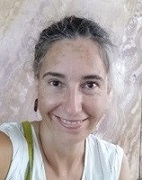 |
Dr Nuria Gavara
Institute for Bioengineering of Catalonia, Spain
She is known for his researches in mechanobiology and in the mechanical behaviour of cells in particular. Its lab has several running projects focused on image-based diagnostics and drug screening. She developed new data analysis tools for image quantification and AFM cell mechanics. She is an expert in machine learning algorithms for diagnostic and screening in biomedicine. She uses an inter-disciplinary approach combining state-of-the art microscopy techniques such as atomic force microscopy, confocal microscopy, traction force microscopy, advanced image analysis, machine learning, molecular biology and biomaterials science to address biological issue such as cancer. Most of his projects involve implementing novel technical approaches based on the previously cited methods, either by costumizing hardware components or by developing new pipelines for data acquisition and analysis.
Topic: Scanning probe microscopy & force spectroscopy
|
Confirmed expert lecturers for the Nano in Bio 2022 conference:
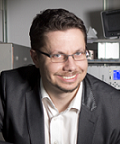
|
Prof. Georg Fantner
Ecole Polytechnique Fédérale de Lausanne, Switzerland
Georg Fantner is currently associate Professor at Ecole Polytechnique Fédérale de Lausanne and the Head of the Laboratory For Bio and Nano Instrumentation (LBNI) which is at the crossroads between instrumentation, microfabrication, and nanoscale biology. He is expert in time resolved nanocharacterization of biological systems. His special interest is in measuring fundamental processes on bacterial cells, such as cell growth, division and the impact of. To understand the relationship between nanoscale structure and microbiological function we augment AFM information with advanced optical microscopy such as confocal microscopy, super resolution microscopy as well as with time-lapse fluorescent microscopy His recent works focuses on new modes for high-speed AFM imaging of molecular processes, as well as long-term time lapse imaging of cellular processes. Prof. Fantner hold several patents in the field of nanotechnology and is the co-founder of two nanotechnology companies.
Topic: Scanning probe microscopy & force spectroscopy
|
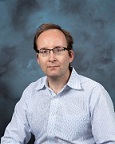 |
Prof. Sergei Kalinin
Oak Ridge National Laboratory, United States
He is a corporate fellow at the Center for Nanophase Materials Sciences (CNMS) at Oak Ridge National Laboratory. His research interests include atom by atom fabrication, application of machine learning and artificial intelligence in atomically resolved and mesoscopic imaging to guide the development of advanced materials for energy and information technologies, as well as coupling between electromechanical, electrical, and transport phenomena on the nanoscale. He has published more than 500 peer-reviewed journal papers, edited 4 books, and holds more than 10 patents. He is also a member of editorial boards for several international journals, including Nanotechnology, Journal of Applied Physics/Applied Physics Letters, and recently established Nature Partner Journal Computational Materials
Topic: Simulations and machine learning
|
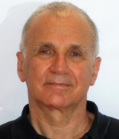 |
Prof. Paolo Scrimin
University of Padova, Department of Chemical Sciences, Padova, Italy
Trained as a physical organic chemist, Paolo Scimin has focused his interests on the mimicry of biological transformations, in particular enzymatic processes. He has pionnered the use of allosteric control by metal ions in tunic catalytic sites and coined the term "nanozymes" back in 2004 to indicate nanosystems endowed with catalytic properties like those of natural enzymes. With these systems, he has obtained nanonucleases operating with a mechanism not much different from that of topoisomerases. He has also shown how these systems can be successfully used in the detoxification of nerve agents. He is in the editorial board of EurJOC, Advances in Physical Organic Chemistry and section Editor-in-chief of Nanomaterials.Prod.
Topic : Latest advances in materials application & life sciences
|
 |
Dr. Philippe Lavalle
Biomaterials & Bioengineering – Inserm/University of Strasbourg, France
co-manages as deputy director the INSERM Unit "Biomaterials and Bioengineering" (45 staff members). Ph. Lavalle focuses his research at the interfaces of different disciplines related to biomaterials and ranging from physical-chemistry of materials to cell biology. More particularly, he designed new materials/coatings with mechano-responsive properties or with smart antimicrobial properties. To date, Ph. Lavalle has applied for five patents and published more than 100 peer review publications cited more than 4500 times and his h index is of 35. He has presented his work at numerous scientific meetings. His team is currently involved in 3 European Project and recently he co-funded a new company named SPARTHA Medical.
Topic: Latest advances in materials application & life sciences
|
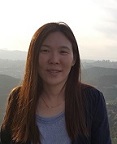 |
Dr. Yoojin Oh
Institute of Biophysics – Johannes Kepler University Linz, Austria
Independent group leader at Johannes Kepler University. Her research focuses on nanometric properties of bio-materials (proteins, bacteria, biofilm, virus, pathogen), applying a portfolio of scanning probe microscopic technique. Particularly, she has investigated pathogenic systems with single molecule biophysics methods to establish interdisciplinary medically-oriented research, by incorporating biophysics, physics, microscopy, and microbiology. Her main interest of research is to understand the detailed molecular mechanisms underlying bacterial interaction and the development of biofilm pathogenicity. She employs SPM-based techniques to understand microbial systems that highlight the promising role of SPM in combining force sensing and imaging for elucidating structure and dynamics.
Topic: Scanning probe microscopy & force spectroscopy
|
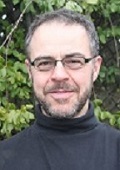 |
Prof. Michel Gingras
Department of Physics & Astronomy – University of Waterloo, Canada
Prof. Gingras’ main research interests are in the field of theoretical condensed matter physics and statistical mechanics, highly correlated classical and quantum condensed matter systems subject to strongly competing, or frustrated, interactions. Gingras’ lab frequently collaborates with experimentalists worldwide to test theoretical ideas developed in his group or to assists in the interpretation of experimental investigations. His lab uses analytical and computational methods, including large-scale numerical simulations. He is the Tier I Canada Research Chair in Condensed Matter Physics & Statistical Mechanics and is a Fellow of both the American Physical Society and the Royal Society of Canada. Prof. Gingras and his group of collaborators at the University of Waterloo recently launched a new research effort in the area of quantum neuroscience, a developing topic within the field of quantum biology which explores the possible existence of quantum effects in the biological realm.
Topic: Latest advances in materials application & life sciences
|
|


